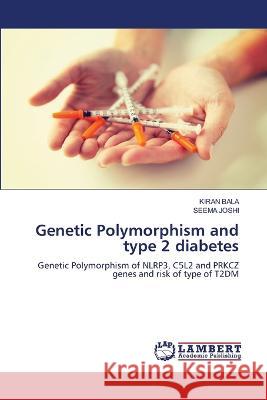Genetic Polymorphism and type 2 diabetes » książka
Genetic Polymorphism and type 2 diabetes
ISBN-13: 9786206160595 / Angielski / Miękka / 132 str.
T2DM is a leading disease in the human people throughout the world, mainly in developing countries with an incidence of 9.3% (Buse et al, 2020). It is characterized by a chronically elevated high blood glucose level due to impairment in insulin action, insulin secretion or both and dysregulation of protein and lipid metabolism. Other factor responsible for pathogenesis of T2DM are combined action of environmental, dietary, behavioral and genetic risk factors which play a major role in describing the susceptibility causes of type 2 diabetes mellitus (Gloyn et al, 2018).T2DM is mainly linked with obesity, age, overweight, family history, hypertension, urbanization and oxidative stress (Sharma et al, 2019). T2DM is a complex polygenic and heterogeneous disorder because it depends on multiple genetic loci and environmental factors (Apovian et al, 2016). Environmental factors can lead to diabetes by affecting gene expression through epigenetic modifications. Around 30%-70% of T2DM risk can be recognized to inherited factors (Cariaso et al, 2012). GWAS identified several genetic loci linked with T2DM (Florez et al, 2008).











